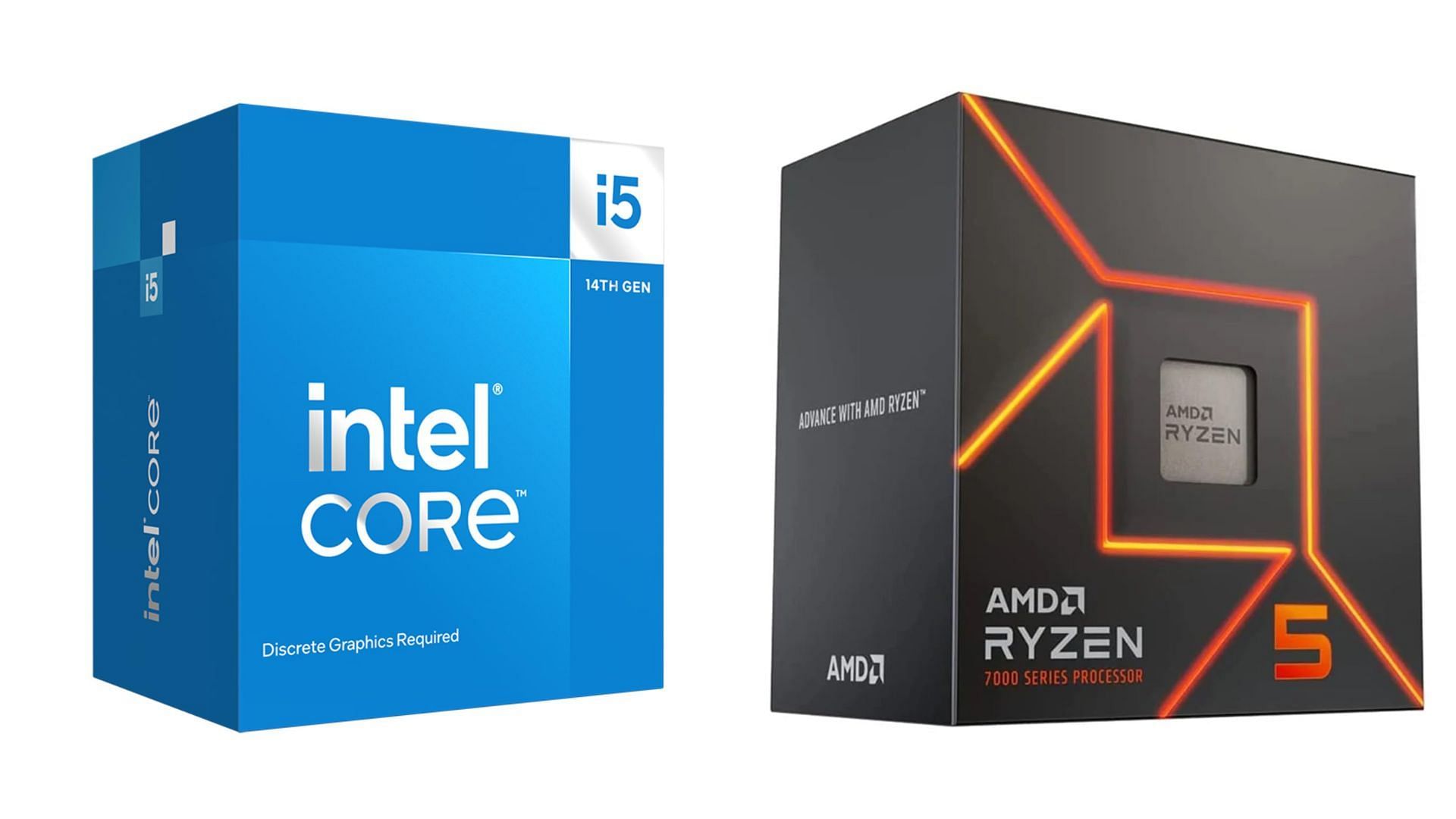The Intel Core i5-14400F and the AMD Ryzen 5 7500F remain top choices among budget gamers despite being a generation old. Their prices have been slashed significantly lately, with both chips hovering around the $130-150 brand-new. Moreover, the processors’ single-core performance remains competitive against the latest releases, earning them a recommendation for those looking to minimize the cost of ownership.
However, should you buy Intel or AMD? There are pros and cons to both. Let’s dissect the chips and try to answer the question.
Note: Some aspects of this article are subjective and reflect the writer’s opinions.
Both the Intel Core i5-14400F and the Ryzen 5 7500F are capable entry-level gaming CPUs


The Intel Core i5-14400F and Ryzen 5 7500F are based on wildly different architectures from the chip-making moguls. An apples-to-apples comparison won’t paint much of an idea of what to expect from either processor. Regardless, let’s have a look at the specs sheets to get an idea of what to expect.
Specs comparison
For starters, the Core i5-14400F is based on the monolithic Raptor Lake Refresh architecture, while AMD has used the chiplet-based Zen 4 technology for the 7500F. This has several implications for efficiency and operating clock speeds, often indicating more thermal headroom and overclocking headroom in Team Red’s offerings.
The Core i5 bundles 10 cores under its hood, six of them being high-performance ‘P’ rated, and the remainder ‘E’ cores. This results in a total of 16 threads. The 7500F, on the other hand, is a traditional six-core, 12-threaded chip, similar to the higher-end Ryzen 5 7600 and 7600X.
Both are rated at 65W. However, they can draw thrice that under full load. Although these chips won’t max out the LGA sockets’ ratings, you’d want to invest in a high-quality power supply to keep the components safe.
Here’s a detailed side-by-side analysis of the on-paper specs of the two processors:
The Core i5-14400F remains the cheaper chip, currently selling for $129.99 on Newegg. Prices have dropped to as low as $95 before, so keep checking for a good deal. The 7500F, on the other hand, still sells for $149 despite being a generation old.
Read more: AMD Ryzen 5 7600X review: The new mid-range king?
Performance comparison


Gaming performance is paramount while choosing a chip in the entry level. While your GPU is a bigger delimiter of performance, especially on systems with more modest hardware, differences in the CPU can be significant when you have a capable graphics card installed.
Below is a look at the framerate numbers achieved by either chip. The data is sourced from the YouTube channel Testing Games.
The Ryzen 5 7500F comes out as the faster chip, securing a lead in six of the 10 games tested. However, in more graphics-heavy titles such as Starfield, the 14400F takes a healthy 8.8% lead. In God of War: Ragnarok and The Witcher 3, the Intel chip leads. However, in several games, performance on the two processors is identical, suggesting a potential GPU bottleneck.
Read more: Top 5 gaming motherboards for Intel Core i5-14400 and i5-14400F
Overall, the Core i5-14400F and Ryzen 5 7500F strike a quirky nerve. They’re priced the same and come with similar performance. That said, we recommend buying the 7500F, given the platform supports upgradability throughout 2027. Intel’s LGA1700 is already dead, and with DDR4 prices on the rise, it doesn’t make for a good recommendation anymore.
Edited by Rachel Syiemlieh






